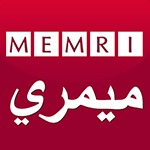 FRIDAY, JULY 29, 1988
FRIDAY, JULY 29, 1988Review/Art
Views of Jewish Identity, Emotion and Healing in Museum Video Show
By JOHN RUSSELL
This summer, the Jewish Museum has made its debut in the domain of video art. “Time and Memory: Video Art and Identity” is the general title of the show.
The most remarkable achievement was also the least experimental. Where others doctor the image, play tricks with the fast-forward and the pause buttons, work with deliberately grainy images and in general tease and torture us, Pier Marton does nothing of the kind. His “Say I’m a Jew” (1985) lasts about 30 minutes and consists of cross-cut interviews with young Jewish men and women who were born in Europe and now live in this country.
Not a moment is wasted, nor a word. The speakers are intelligent, articulate, fearless and often very good looking. What they think, they say. What they feel is written on their faces. We are in a room with a bunch of people – some of them clearly brilliant, all of them truthful – who decided that there are tricky and disconcerting problems in life as to which passivity is not enough.
One of those problems is, or was, the problem of what to do about being Jewish as a very young person in Europe in the immediate aftermath of World War II. People who were not alive at that time have trouble imagining the extent to which fear and dread were fundamental. What a burden, at that time, was the immediate past! Omnipresent, also, the apprehension that it might repeat itself at any moment.
Mr. Marton’s still-young people come straight out with thoughts not often so bravely and so clearly expressed. “Why did I have to be born Jewish?” is one of them. “Can I ever pass unnoticed?” is another. “Why are we so damnably different?” is third. We know why these questions had to surface. Not to be in a state of emotional disarray at that time would have been a mark of some kind of moral paralysis. And, as Mr. Marton says in his notes on the film, “When opening wounds, the first thought or fear is that of infection.”
It is the wonder of Mr. Marton’s film that his young people heal their wounds almost before our eyes. They end not as victims, but as exemplary human beings. And we leave convinced that – to quote again from Mr. Marton- “nothing short of complete healing is required of all of us.” This, if ever, is a film that justifies the title of the show -“Video Art and Identity.” Individual identity, individual healing, individual transcendence are his subjects. It deserves a much wider audience.


 Laure Adler & Ses Invités/Ses sujets
Laure Adler & Ses Invités/Ses sujets MEMRI
MEMRI![Magazine d’Actualité Internationale [abonnez-vous aux podcasts!] Arte Reportage Magazine d’Actualité Internationale [abonnez-vous aux podcasts!]](https://www.arte.tv/i18n/3838018,property=data,v=1.png) Arte Reportage
Arte Reportage Frontline
Frontline Independent Lens
Independent Lens